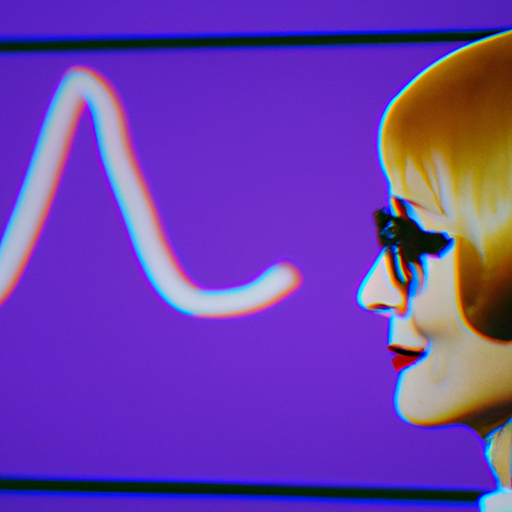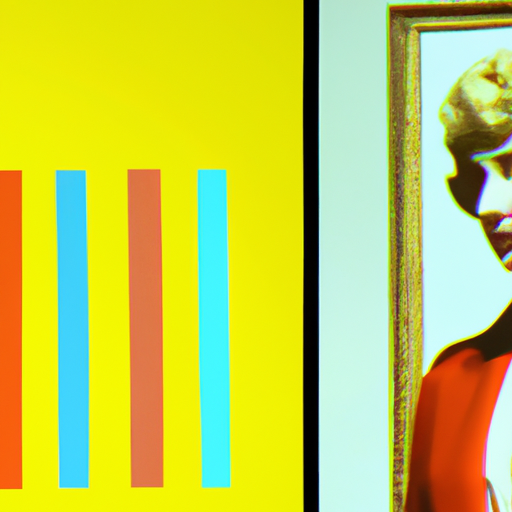
-
Table of Contents
A Journey Through Art and Design of the 1960s

Introduction
The 1960s was a decade of immense cultural and social change, and the world of art and design was no exception. This era witnessed a shift in artistic styles, a rebellion against traditional norms, and the emergence of new mediums and techniques. From the vibrant pop art movement to the groundbreaking designs of the space age, the 1960s left an indelible mark on the art and design world. In this article, we will take a journey through the art and design of the 1960s, exploring its key movements, influential artists, and lasting impact.
The Pop Art Movement
The 1960s saw the rise of the pop art movement, which challenged the traditional notions of art and embraced popular culture and consumerism. Artists like Andy Warhol, Roy Lichtenstein, and Claes Oldenburg became synonymous with this movement, using everyday objects, advertising imagery, and comic book aesthetics in their works.
Andy Warhol, one of the most iconic figures of the pop art movement, created artworks that celebrated mass production and celebrity culture. His famous piece, “Campbell’s Soup Cans,” consisted of 32 canvases, each depicting a different flavor of Campbell’s Soup. This work not only blurred the boundaries between art and commercialism but also questioned the uniqueness and value of art itself.
Roy Lichtenstein, on the other hand, drew inspiration from comic books and popular advertisements. His signature style involved using bold lines, primary colors, and Ben-Day dots to mimic the printing techniques of comic strips. Lichtenstein’s “Whaam!” is a prime example of his work, depicting a dramatic aerial combat scene inspired by a comic book panel.
Claes Oldenburg, known for his larger-than-life sculptures, transformed everyday objects into monumental artworks. His “Giant Three-Way Plug” and “Giant Soft Fan” are examples of his playful and whimsical approach to art. These sculptures challenged the traditional notion of sculpture as something static and unchanging, inviting viewers to interact with the artwork in a new and unconventional way.
The Space Age and Futurism
The 1960s was also a time of great scientific and technological advancements, particularly in space exploration. This era witnessed the first manned spaceflight, the moon landing, and a general fascination with the possibilities of the future. These developments had a profound influence on the art and design of the time, giving rise to the space age and futurism movements.
Artists and designers began incorporating futuristic elements into their works, embracing sleek lines, geometric shapes, and metallic finishes. The space age aesthetic was characterized by its optimism, embracing the idea of a utopian future where technology and progress would solve all problems.
One of the most iconic examples of space age design is the “Ball Chair” by Finnish designer Eero Aarnio. This chair, resembling a space capsule, encapsulated the futuristic spirit of the 1960s. Its spherical shape and vibrant colors made it a symbol of modernity and innovation.
Another influential figure in the space age movement was Italian designer Joe Colombo. His “Tube Chair” and “Elda Chair” showcased his innovative use of materials and ergonomic design principles. Colombo’s designs were not only visually striking but also functional, reflecting the changing needs and lifestyles of the time.
The Counterculture and Psychedelic Art
The 1960s was a time of social and political upheaval, with the counterculture movement challenging established norms and advocating for peace, love, and equality. This cultural revolution also had a profound impact on the art and design world, giving rise to psychedelic art.
Psychedelic art embraced vibrant colors, intricate patterns, and mind-altering imagery, often inspired by hallucinogenic experiences. Artists like Peter Max, Wes Wilson, and Victor Moscoso became synonymous with this movement, creating posters, album covers, and other visual artworks that captured the spirit of the counterculture.
Peter Max, known for his bold use of color and cosmic imagery, created iconic album covers for bands like The Beatles and Jefferson Airplane. His work reflected the optimism and idealism of the counterculture movement, with its emphasis on peace, love, and unity.
Wes Wilson, a pioneer of psychedelic poster art, developed a distinctive style characterized by flowing typography and intricate patterns. His posters for concerts at the Fillmore Auditorium in San Francisco became iconic symbols of the era, capturing the energy and spirit of the counterculture movement.
Victor Moscoso, influenced by Op art and comic book aesthetics, created psychedelic posters that played with perception and optical illusions. His use of vibrant colors and distorted imagery made his posters visually striking and captivating.
The Legacy of the 1960s
The art and design of the 1960s had a lasting impact on subsequent decades and continues to influence contemporary artists and designers. The pop art movement challenged the boundaries of art and popular culture, paving the way for future generations of artists to explore new mediums and concepts.
The space age and futurism movements introduced a new aesthetic that embraced technology and progress, shaping the design of everyday objects and inspiring future innovations. The sleek lines and minimalist forms of the 1960s continue to be celebrated in modern design.
The counterculture and psychedelic art movements challenged societal norms and advocated for social change, leaving a lasting impact on the art world. The spirit of rebellion and experimentation that characterized this era continues to inspire artists to push boundaries and challenge the status quo.
Conclusion
The art and design of the 1960s were a reflection of the cultural and social changes taking place during that time. From the pop art movement to the space age and futurism, and the counterculture and psychedelic art, this era witnessed a diverse range of artistic styles and movements.
The artists and designers of the 1960s pushed boundaries, challenged traditional norms, and embraced new mediums and techniques. Their works continue to captivate audiences and inspire future generations of artists and designers.
Whether it was Andy Warhol’s celebration of consumer culture, Eero Aarnio’s futuristic furniture designs, or Peter Max’s cosmic imagery, the art and design of the 1960s left an indelible mark on the creative world. It was a decade of innovation, rebellion, and cultural transformation that continues to shape the way we perceive and create art and design today.
